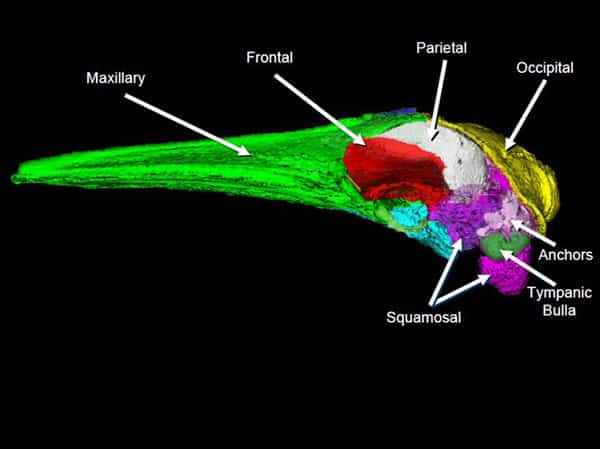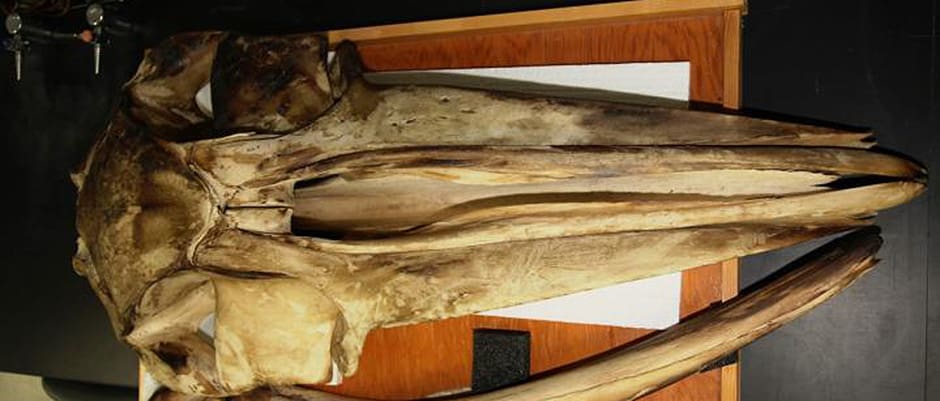Share this article
Fin Whales and Other Baleens Hear Sounds with Their Bones
Fin whales and other baleen species may not hear each other’s calls through their ears — they may feel it in their bones, according to a new study.
“Bone conduction is likely the predominant mechanism for hearing in fin whales and other baleen whales,” Ted Cranford said in a release. Cranford is a biologist with the San Diego State University and a coauthor of the study released recently in PLOS ONE. “This is, in my opinion, a grand discovery.”
The findings are important to conservation because little has been known about exactly how whales hear the sounds they make across the oceans. That’s until 2003 when a young fin whale (Balaenoptera physalus) washed up on a beach in Orange County, Calif., giving researchers the chance to examine the way their skulls absorb sound. They took the dead whale’s skull and put it into a large X-ray CT scanner originally created to examine rocket motors. They found that the low frequency sounds that fin whales use to communicate are amplified by bone conduction.

A look at the left lateral view of the skull bones in a fin whale (Balaenoptera physalis).
Image Credit: Ted W. Cranford and Petr Krysl
Petr Krysl, a University of California, San Diego engineer and another of the researchers involved in the study, said that humans experience something akin to this when hearing underwater. “We have that experience when we submerge entirely in a pool,” he said. “Our ears are useless, but we still hear something because our head shakes under the pushing and pulling of the sound waves carried by the water.”
While the findings could be used by legislators deciding on potential legislations regulating human noise in the oceans caused by boats or underwater construction, for example, Cranford said that the most important part of the study is that it revealed a long-standing mystery about fin whales — a species listed on the Endangered Species Act.
“What our contribution does is give us a window into how the world’s largest animals hear, by an odd mechanism no less,” he said. “This research has driven home one beautiful principle: Anatomic structure is no accident. It is functional, and often beautifully designed in unanticipated ways.”
Krysl said they will now build on this information to see if it is applicable across other baleen species like blue whales (Balaenoptera musculus) or minke whales (Balaenoptera acutorostrata). “There is a blueprint for multiple species and it is useful to compare across species to gain insight,” he said.
Header Image:
The fin whale skull used for this study now resides in SDSU's Museum of Biodiversity.
Image Credit: SDSU








